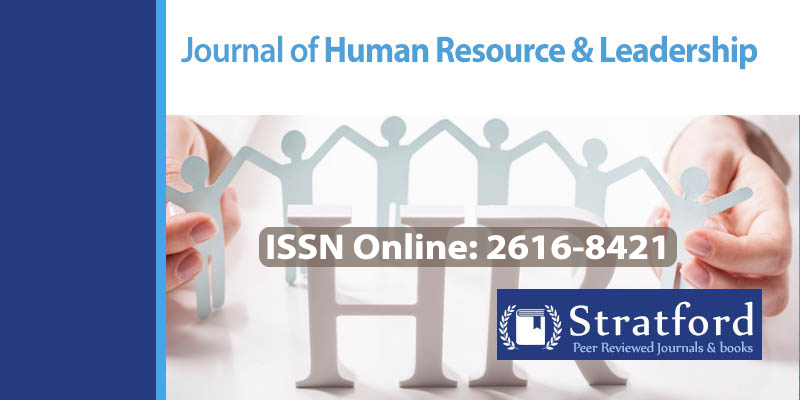Technology Adoption, Human Resource Management Strategies and Employee Satisfaction in the Hospitality Industry in Malaysia
DOI:
https://doi.org/10.53819/81018102t4140Abstract
Human resource management strategies in the hospitality industry remain critical area of study; nonetheless, it has become an integral part of people’s daily lives. ICT and by extension IMT are everywhere with major economic sectors adopting the technique to enhance their operations. The purpose of this study was to investigate the role of hospitality human resource management strategies in enhancing competitiveness through customer satisfaction in Malaysia with a focus on five 5-star hotels in Kuala Lumpur. The study aimed at investigating how IMT enhanced consumer product awareness, service quality, and employee performance toward customer satisfaction. The study mostly used open-ended questionnaires administered to 91 participants who involved employees and customers of the 5 hotels. Quantitative data was analyzed descriptively using Excel and presented through charts and narrative form. The response rate was 84%. Findings from the study indicated that product awareness, service quality, and employee performance enhance customer satisfaction within the hotel sector. The study recommended that managers in the hospitality sector design better ways of using IMT to ensure competitive advantage. Suggestions are made on further research should focus on the role played by IMT in enhancing customer preference and buying behaviours, using in-depth approaches in other service sub-sectors like tour operators and travel agents.
Keywords: Human Resource Management, Employee Satisfaction, Hospitality Industry, HRM Strategies, Malaysia
References
Bryman, A., & Bell, E. (2015). Business research methods. Oxford University Press.
Buhalis, D., & Amaranggana, A. (2015). Smart tourism destinations enhancing tourism experience through personalisation of services. In I. Tussyadiah & A. Inversini (Eds.), Information and Communication Technologies in Tourism 2015 (pp. 377–389). Springer. https://doi.org/10.1007/978-3-319-14343-9_28
Buhalis, D., & Law, R. (2008). Progress in information technology and tourism management: 20 years on and 10 years after the Internet—The state of eTourism research. Tourism Management, 29(4), 609–623. https://doi.org/10.1016/j.tourman.2008.01.005
Camisón, C., & Villar-López, A. (2014). Organizational innovation as an enabler of technological innovation capabilities and firm performance. Journal of Business Research, 67(1), 2891–2902. https://doi.org/10.1016/j.jbusres.2012.06.004
Chahal, N., & Kumar, M. (2014). The impact of information communication technology and it’s application’s usage in lodging industry: An exploratory study. International Journal of Techno-Management Research, 2(1), 1–17.
Chakraborty, U., & Bhat, S. (2018). The effects of credible online reviews on brand equity dimensions and its consequence on consumer. Journal of Promotion Management, 24(1), 57–82. https://doi.org/10.1080/10496491.2017.1346541
Daniel, W. W. (1999). Biostatistics: A Foundation for Analysis in the Health Sciences (7th ed.). John Wiley & Sons.
Eason, K. D. (2014). Information technology and organisational change. CRC Press.
Habri, H. A. Y. Al, & Sonawane, M. A. (2016). Creating awareness of management information system and its advantages in business performance : A review of literature. IOSR Journal of Business and Management (IOSR-JBM), 18(2), 70–73. https://doi.org/10.9790/487X-18217073
Islam, M. R. ., Rahman, M. M. ., Mahmud, M. ., Rahman, M. A. ., Mohamad, M. H. S. ., & Embong, A. H. A. (2021). Review on blockchain security issues and challenges. Proceedings of the 2021 IEEE 12th Control and System Graduate Research Colloquium (ICSGRC), 227–232. https://doi.org/10.1109/ICSGRC53186.2021.9515276
Law, R., Buhalis, D., & Cobanoglu, C. (2014). Progress on information and communication technologies in hospitality and tourism. International Journal of Contemporary Hospitality Management, 26(5), 727–750. https://doi.org/10.1177/1938965512453199
Law, R., Leung, D., Au, N., & Lee, H. A. (2013). Progress and development of information technology in the hospitality industry: Evidence from Cornell Hospitality. Cornell Hospitality Quarterly, 54(1), 10–24. https://doi.org/10.1108/IJCHM-08-2013-0367
Lee, S., & Choeh, J. Y. (2018). The interactive impact of online word-of-mouth and review helpfulness on box office revenue. Management Decision, 56(4), 849–866. https://doi.org/10.1108/MD-06-2017-0561
Leng, J. ., Zhou, M. ., Zhao, J. L. ., Huang, Y. ., & Bian, Y. (2020). Blockchain security: A survey of techniques and research directions. IEEE Transnational Service and Computational. https://doi.org/10.1109/TSC.2020.3038641
McNabb, D. E. (2015). Research methods in public administration and nonprofit management. Roultedge. https://doi.org/10.4324/9781315701127
Mgunda, M. I. (2019). The Impacts Information Technology On Business. Journal of International Conference Proceedings, 2(3), 149–156. https://doi.org/10.32535/jicp.v2i3.656. https://doi.org/10.32535/jicp.v2i3.656
Mim, S. J., & Ferdous, M. M. A. (2020). Factors influencing customers satisfaction in hospitality industry : Fine dining restaurants. University of Gavle.
Morch, A. (2023). Digital change or digital transformation? Understanding the difference is key for Hotels. Hospitality Net. https://www.hospitalitynet.org/opinion/4115614.html
Ozturk, A. B., Bilgihan, A., Nusair, K., & Okumus, F. (2016). What keeps the mobile hotel booking users loyal? Investigating the roles of self-efficacy, compatibility, perceived ease of use, and perceived convenience. International Journal of Information Management, 36(6), 1350–1359. https://doi.org/10.1016/j.ijinfomgt.2016.04.005
Pearlson, K. E., Saunders, C. S., & Galletta, D. F. (2016). Managing and using information systems, binder ready version: A strategic approach. John Wiley & Sons.
Rana, R. L., Adamashvili, N., & Tricase, C. (2022). The Impact of Blockchain Technology Adoption on Tourism Industry: A Systematic Literature Review. Sustainability (Switzerland), 14(12). https://doi.org/10.3390/su14127383
Rogers, E. M. (2003). Diffusion of Innovations (5th ed.). Free Press.
Spiller, J. (2014). History of convention tourism. In Convention Tourism (pp. 27–44). Roultedge.
Stark, J. (2015). Product lifecycle management. In Product Lifecycle Management (pp. 1–29). Springer.
Tsao, W. C., & Mau, T. C. (2019). Ethics in social media marketing: How should sponsorship information be disclosed in online product reviews? Aslib Journal of Information Management, 71(2), 195–216. https://doi.org/10.1108/AJIM-04-2018-0080
Westcott, M., & Anderson, W. (2020). Introduction to tourism and hospitality in BC (2nd ed.). BCcampus.
Xiang, J. Y., Kim, J. K., Lee, S., & He, Z. (2020). The impact of IT investment on firm performance in Korean insurance industry. 2009 First International Conference on Information Science and Engineering, 3124–3127. https://doi.org/10.1109/ICISE.2009.1214
Yu, S. C. (2017). Mining aboriginal cultural tourism on the internet information using destination image: A study of blogs for Fu-Hsing District, Taoyuan City. Journal of National United University, 14(1), 29–42.


